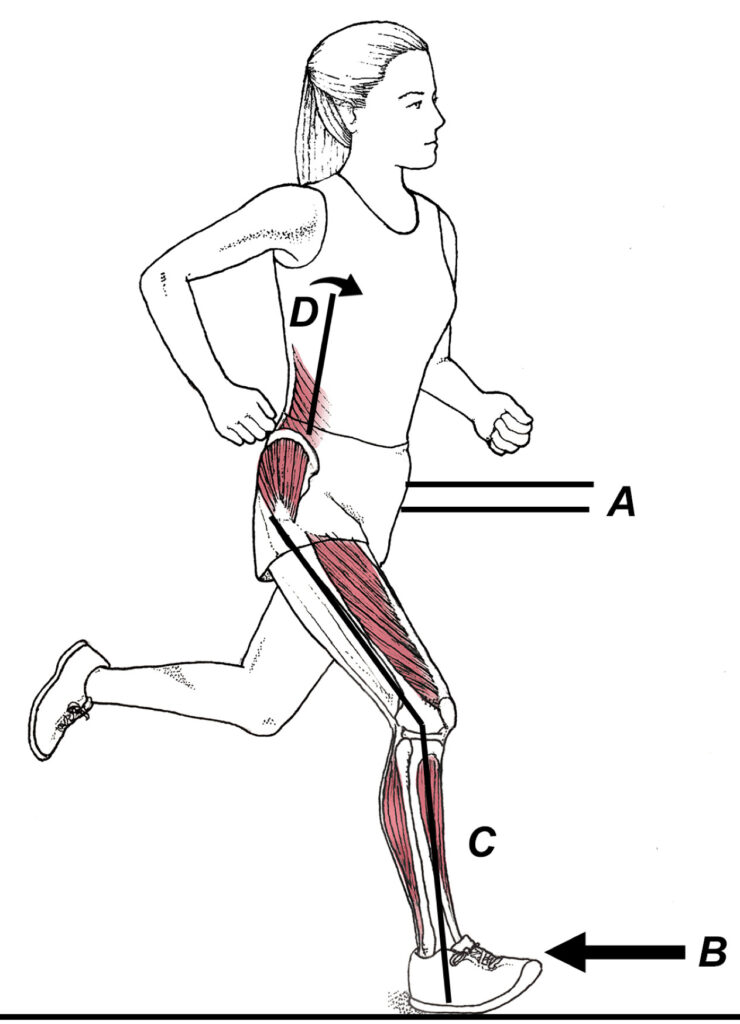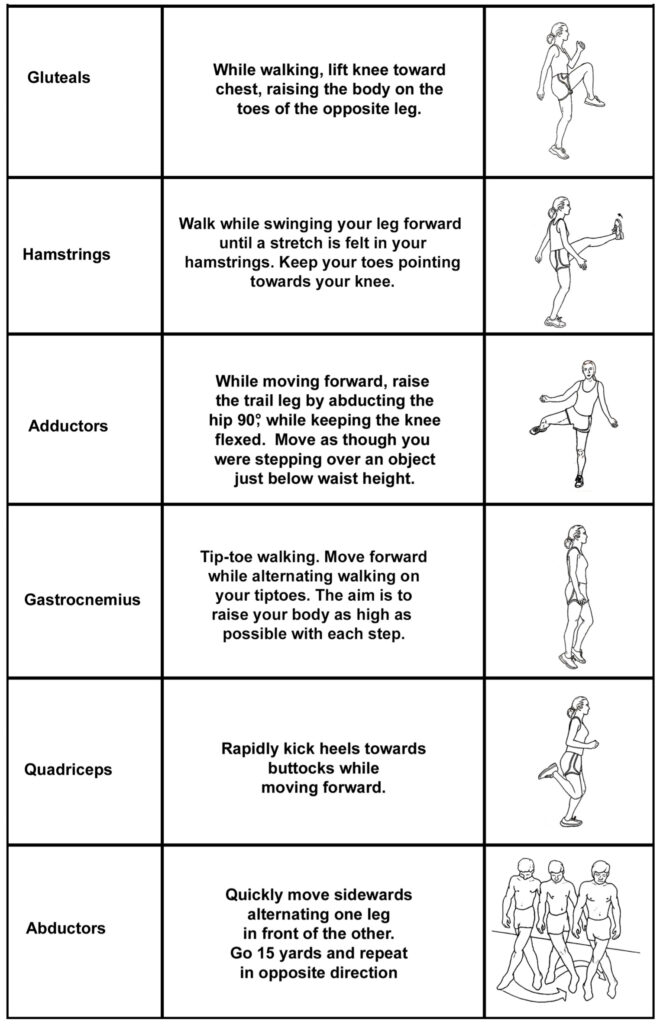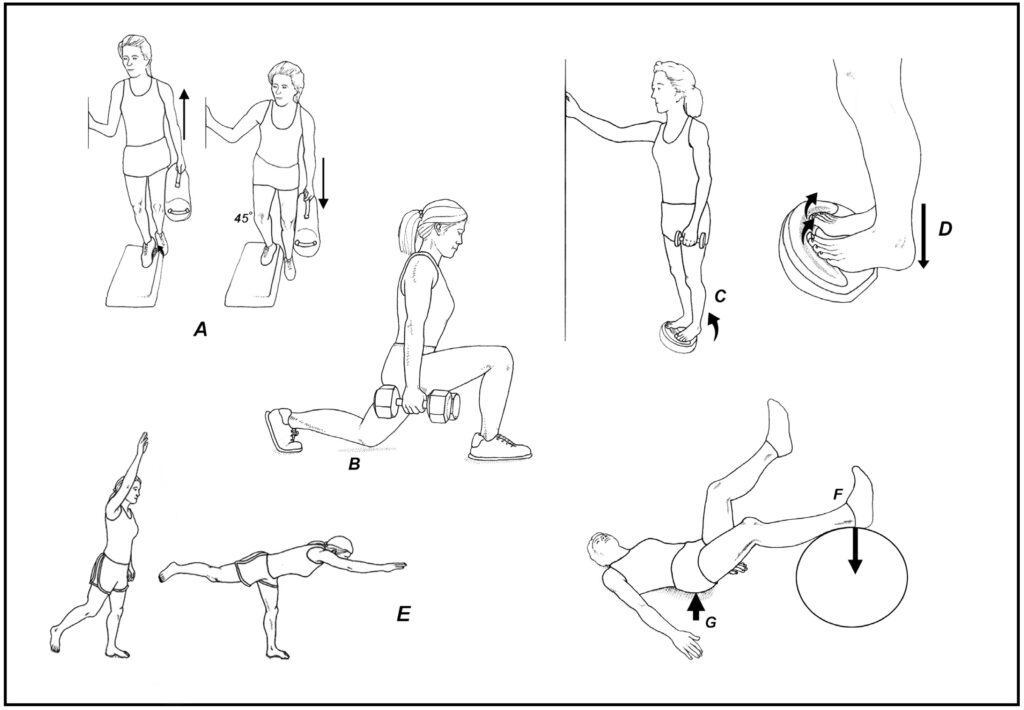Given the popularity of running, it’s surprising how much controversy exists over which style of running is best for improving performance. Some coaches advocate that all you need to do to achieve the ideal running form is to run with a cadence of 180 foot strikes per minute. In theory, this ideal cadence not only improves your running form, it also reduces your overall risk of injury. The problem with this belief is that a universal cadence is achieved by altering stride length. More than 30 years ago, the renowned exercise physiologist Tim Anderson demonstrated that any adjustment in the length of the runners self-selected running stride produces an immediate decrease in running efficiency (1). On top of that, the world’s best runners have huge fluctuations in cadence, with some runners averaging 145 foot strikes per minute, and others averaging 210. Clearly, if cadence was an important factor in running economy, there wouldn’t be so much variation among elites.
Perhaps the most pervasive belief regarding options to improve running form is that if runners should universally avoid heel striking by making initial ground contact with the mid or forefoot. Proponents of the more forward contact point suggest that a midfoot strike pattern is “more natural” because experienced lifelong barefoot runners immediately switch from heel to midfoot strike patterns when transitioning from walking to running. The switch to a more forward contact point is theorized to improve shock absorption (lessening our potential for injury) and enhance the storage and return of energy in our tendons (making us faster and more efficient). Advocates of Chi and Pose Running have gone so far as to say that runners who continue to strike the ground with their heels are reducing running efficiency and increasing their potential for injury.
In a recent literature review evaluating the pros and cons of the various foot contact points, Joe Hamill and Allison Gruber (2) looked at every published paper addressing the controversy and came to the adamant conclusion that “changing to a mid-or forefoot strike pattern does not improve running economy, does not eliminate an impact at the foot-ground contact, and does not reduce the risk of running-related injuries.”
In my opinion, the controversy regarding ideal running form was finally resolved in 2017 when researchers from the United Kingdom evaluated 97 experienced distance runners (47 females) to determine exactly which biomechanical factors are associated with improved running economy and which factors relate to performance (3). To evaluate economy, the authors analyzed a range of respiratory gases and the velocity of lactate turn point (a mark- er of fatigue). The correlation between running performance and running form was determined by measuring three-dimensional motion of the spine, pelvis, and lower extremity during all phases of gait and analyzing which specific movement patterns correlated with each runner’s season’s best running time. The authors looked at stride length normalized to height, cadence, vertical oscillation of the pelvis, braking forces, posture, and the position of the hip, knee, and foot during different phases of the running cycle.
Surprisingly, even though all participants were experienced distance runners, including 29 elite runners, there was huge variation in all aspects of running form. For example, vertical oscillation of the pelvis varied two-fold and braking forces differed by 280%. Cadence ranged from 144-222 foot strikes per minute while stride length was between 1.04 and 1.49 times the runner’s height. Runners also showed significant differences in the positions of their feet, legs, and hips at touchdown. Some runners made initial ground contact with their feet pointing down 11° while others hit the ground with their feet pointing up 24°. The position of their lower legs varied from 1° to 16° relative to vertical, and the forward lean of the trunk varied by 20°.
After analyzing all the data, the authors determined that the most economical runners had less up and down motion of the pelvis, lower braking force, stiffer knees, shorter stride lengths, and a more vertical leg during initial ground contact. Running performance was predicted by lower braking forces, a more vertical leg during contact, reduced spinal motion, and reduced ground contact times. The best part of this study was the conclusion that simply positioning your leg in a near vertical position at initial touchdown could improve both economy and performance. In fact, having a nearly vertical leg at touchdown explained 10% of runner’s performance and it is one of the easiest changes in running form you can make. Figure 1 summarizes the various joint interactions associated with improved performance and efficiency. The authors point that their study provides “novel and robust evidence” that running form strongly influences running economy and performance.

Folland et al. (3) prove the most economical runners presented with reduced vertical oscillation of the pelvis (A) lower braking forces (B), shorter stride lengths, and a more vertical leg during initial ground contact (C). Runners with the fastest running times presented with decreased braking forces, shorter ground contact times, a more vertical leg at initial contact (C) and a reduced range of spinal motion (D). Excessive vertical oscillation of the pelvis and a more vertical leg at touchdown most strongly correlated with both improved economy and faster running times.
The Best Drills and Exercises for Improved Performance
While you can easily adjust the position of your leg and reduce motion of your pelvis with minimal practice, the ability to reduce ground contact time is a little more complicated and can typically only be achieved by performing plyometric running drills. These drills improve the storage and return of energy in your tendons, which in turn allows you to spend less time on the ground as you more effectively propel forward. My favorite plyometric drills are illustrated in figure 2. One study showed a 5% improvement in VO2 and a 3% improvement in 3 km race performance after just 6 weeks of training (4).

An alternate but more complicated method for reducing ground contact times in improving efficiency is to perform a series of six, 10-second strides while wearing a weighted vest (fitted with 20 percent of their body weight). Researchers from New Zealand (5) showed that compared to a control group, runners who performed the drills while wearing the weighted vests had huge improvements in peak running speed and economy. Apparently, the weighted vests allowed for faster running times and improved efficiency because the vests forced the runners to stiffen their knees and hips in order to absorb forces associated with carrying the added weight, which in turn reduced the amount of time they spent on the ground. The improved form persisted even after the weights were no longer worn. I really like this study as the added weight allows your central nervous system to analyze impact forces at contact and modify limb position and stiffness accordingly. For example, if you had excessive up and down oscillation of the center of mass and/or were overstriding, you might not notice this if you were strong and healthy but the amplified impact force associated with wearing the weighted vest would make it more obvious. My only concern is that the weighted vests used in this study were pretty heavy, which could increase the risk of injury. Less fit or inexperienced runners should definitely start out with lighter weights and gradually increase the load based on comfort. Runners who don’t want to play around with weighted vests can also increase efficiency by adding a jump rope routine to their weekly workouts. One recent paper showed that swapping out a conventional warm- up with five minutes of jumping rope a few times per week resulted in significant improvements in 3-kilometer time-trial performance (6). The jump rope training more than likely allowed the runners to spend less time on the ground as the tendons of their legs and arches learned to more effectively store and return energy.
Lastly, because isometric contractions performed with muscles maintained in their lengthened positions have been proven to improve tendon resiliency (7), I’ve outlined a few simple exercises that you can do in five minutes or less to keep your muscles and tendons strong and supple (Fig. 3). Whether you run a marathon in two or six hours, these exercises can help improve performance and reduce your risk of injury.

Your Achilles and calf tendons can be made more resilient with the ToePro platform. Warm up by doing 25 repetitions (C) and then slowly lower your heels so they are 1 cm from the ground (D). Hold this position isometrically for 20 seconds and repeat that routine 4 times. With each set, alternate between raising and lowering your arch to isolate different tendons: your peroneals are lengthened when your weight is on the outside of your foot, while your tibialis posterior tendon is lengthened when your foot is rolled inward. If you don’t want to use a ToePro, you can do this exercise by leaning forward into a wall while standing on an AirEx balance pad. With all of these exercises, you need to be fatigued when you finish so stronger runners my need to wear a weighted back pack or hold a dumbbell.
The most effective exercise to improve resilience in the glutes and hamstrings is the single-leg push down. Before perform- ing this exercise, warm up with a standing windmill exercise illustrated in figure E. Repeat this exercise 5 times on each side. Next, lie face up on the floor with your arms out for stability, then place your foot on a physioball or workout bench and push down with your heel (F) with enough force to raise her pelvis off the ground (G). Try to duplicate the position your hip is in during initial contact, which is typically between 20 and 30° of flexion. Hold this position for 20 seconds and repeat 4 times on each leg. If this exercise is too difficult, bring the opposite knee towards the chest. Conversely, if you’re not fatigued after 20 seconds, straighten the opposite leg so it is closer to the leg that is pushing down, which makes the exercise significantly more difficult. This exercise duplicates the position your foot is in just before initial ground contact and markedly strengthens the hamstring tendons, which are important for both shock absorption and storing and returning energy.
References:
- Anderson T. Biomechanics and running economy. Sports Med. 1996;22:76-89.
- Hamill J, Gruber A. Is changing foot strike pattern beneficial to runners? J Sport Health Sci. 2017; 146-153.
- Folland J, Allen S, Black M, et al. Running technique is an important component of running economy and performance. Med Sci Sports Exerc. 2017;49:1412-1423.
- Pellegrino J, Ruby B, Dumke C. Effect of plyometrics on the energy cost of running and MHC and titin isoforms. Med Sci Sports Exerc. 2015.
- Barnes K, Hopkins W, McGuigan M, et al. Form-up with a weighted vest improves writing performance via leg stiffness and running economy. J Sci Med Sport 2014.
- Felipe Garcia-Pinillos, Lago-Fuentes C, Latorre-Roman Pedro, et al. Job-Rope Training: Improved 3-Km Time Trial Performance and Endurance Runners Via Enhanced Lower-Limb Reactivity and Foot-Arch Stiffness. International Journal of Sports Physiology and Performance. 2020; 15:927-933.
- Oranchuk D, Storey A, Nelson A, Cronin J. Isometric training and long-term adaptations: Effects of muscle length, intensity, and intent: A systematic review. Scand J Med Sci Sports. Dec 2018.
- Turki O, Chaouachi D, Behm D et al. The effect of warm-ups incorporating different volumes of dynamic stretching on 10-and 20-M sprint performance in highly trained male athletes. J Strength Cond. 2012;26: 63-71.
